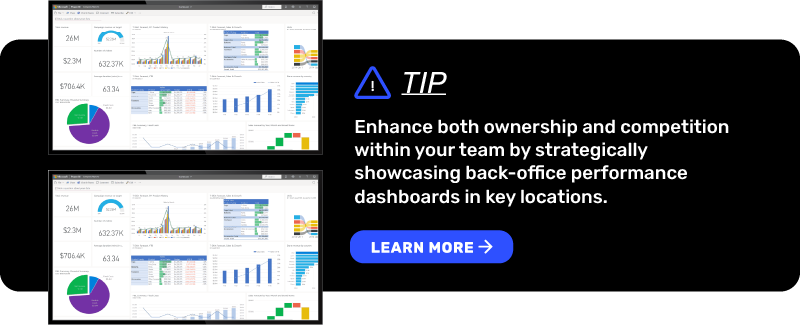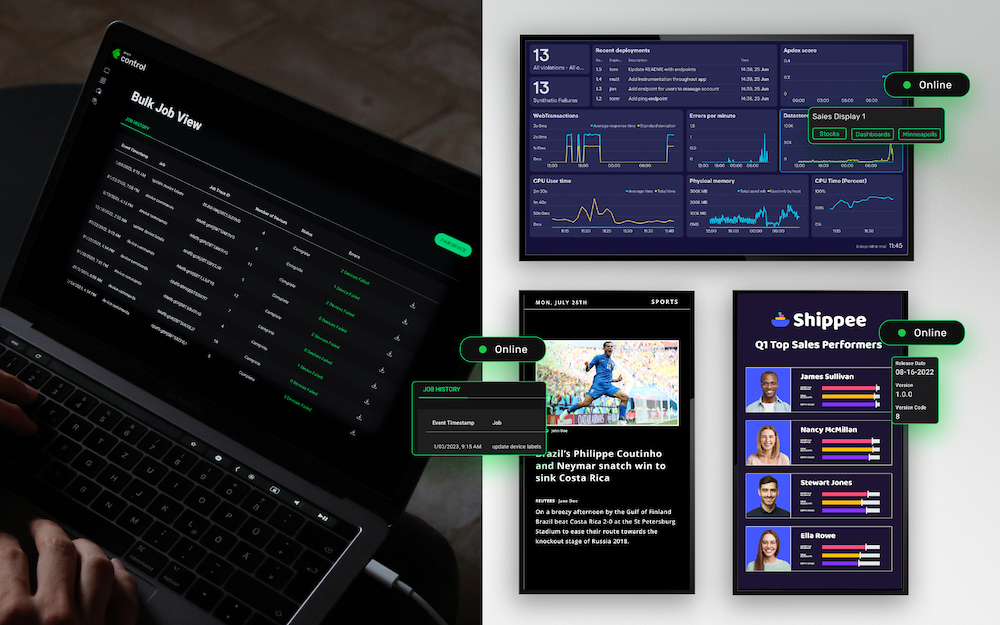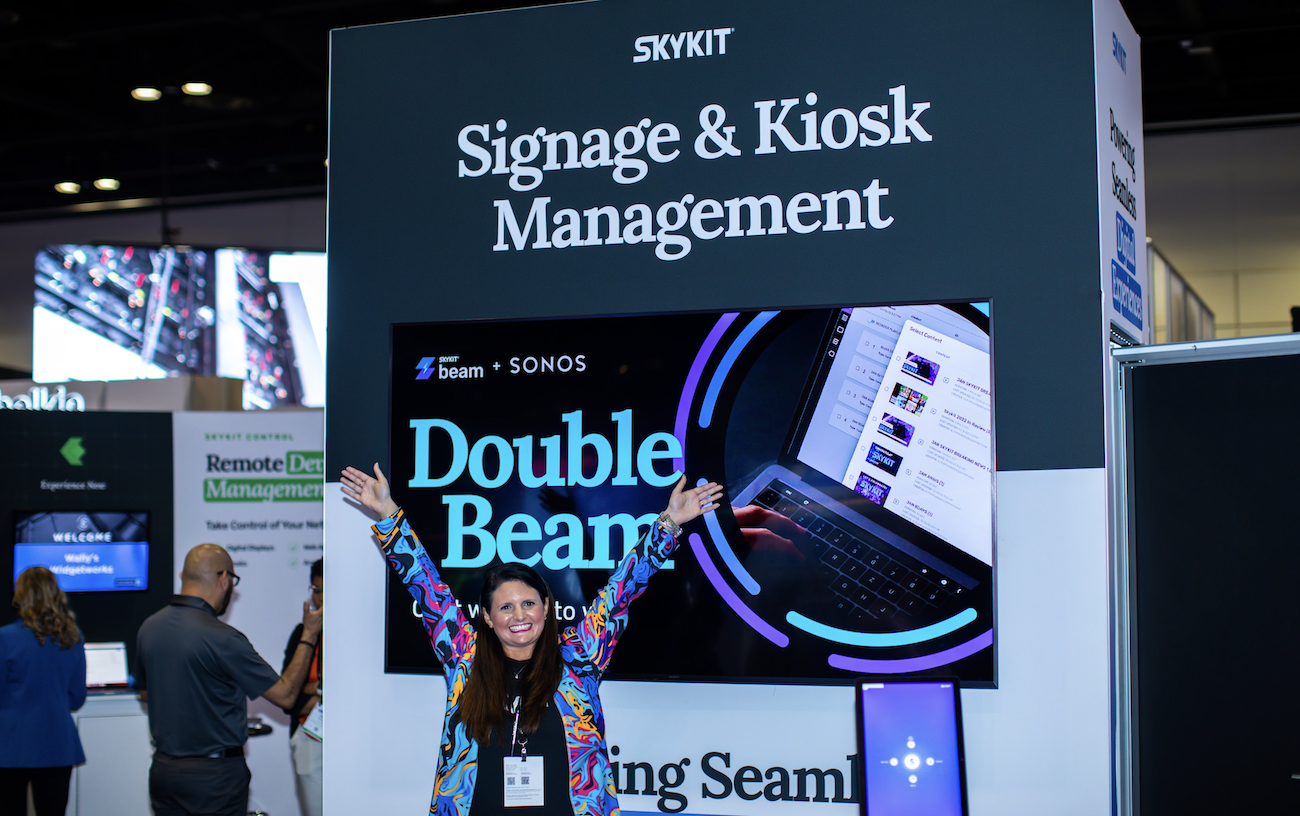Navigating the buzzword-heavy landscape of corporate culture, you’ve heard “employee engagement” more than once.
But this isn’t just jargon; it’s a solution to the real problem of disengaged, disinterested staff. Employee engagement isn’t merely about job satisfaction. It’s an emotional commitment that links an employee directly to the objectives and vision of their organization.
Addressing this can transform your workforce from disengaged clock-watchers into proactive contributors aligned with your company’s goals. So, let’s talk about why fostering this commitment is vital for any organization’s success.
Employee Engagement Strategies: The Basics
Scenario:
You step into an office or join a Zoom meeting, and the energy is palpable. Everywhere you look, individuals are collaborating with enthusiasm and sharing innovative ideas.
This isn’t a scene from a utopian corporate movie; it’s the result of effective employee engagement.
But what does that really mean?
Definition:
At its core, employee engagement isn’t just about satisfaction or motivation. It’s a deeper, more profound connection. When you’re genuinely engaged, you’re not just working for a paycheck or the next promotion.
You’re working because you believe in what you’re doing and where the company is heading. It’s a state of mind, a passion that drives you to go the extra mile, not because you have to, but because you want to.
Employee Engagement Strategies: 3 key concepts
1. Commitment:
Remember the last time you were so engrossed in a task that you lost track of time? That’s commitment.
It’s not about the hours you spend on a task but the quality of those hours. Engaged employees often feel a sense of loyalty to their organization. They’re not just there for the short term; they envision a future with the company and are eager to contribute to its growth.
It’s a mutual relationship: as the company grows, so do they.
2. Referral
Think about your favorite restaurant or movie. You’d naturally recommend it to friends and family, right? The same principle applies to workplaces. If you’re genuinely engaged and believe in your organization’s culture, values, and vision, you’d proudly recommend it as a great place to work.
This word-of-mouth endorsement is more powerful than any recruitment ad. It’s a testament to genuine engagement and a positive work environment.
3. Motivation:
Motivation is that inner spark, the driving force that propels you forward. It’s waking up excited about the day ahead, eager to tackle challenges and contribute to the team’s success.
Engaged employees don’t just do tasks; they seek out opportunities, innovate, and constantly look for ways to improve.
Their motivation isn’t solely derived from external rewards like bonuses or promotions but from an intrinsic desire to excel and make a difference.
In essence, understanding employee engagement is about recognizing the emotional and psychological ties that bind employees to their workplace. It’s about fostering an environment where these ties can strengthen, leading to not only a happier workforce but also a more productive and innovative one.
Employee Engagement Strategies: A Deeper Dive
The question becomes: How can companies cultivate this invaluable asset?
Here are a few strategies that you can start with to help build an engaged workforce.
Employee Engagement Surveys:
Employee engagement surveys are a helpful tool for organizations to gauge the pulse of their workforce.
But here’s the catch:
These surveys shouldn’t be a one-off annual event. Just as market trends change and evolve, so do employee sentiments and needs. Conducting these surveys consistently will ensure that organizations stay updated with real-time feedback, allowing them to address concerns promptly and adapt to changing dynamics.
The key to success with surveys is to act on the information provided. If you think that surveys are the quick way to say, “Hey, we listen to our employees here!” but don’t take any action on the feedback, you are going to lose the trust of your employees.
Transparent Communication:
The digital era, coupled with the surge in remote work, has transformed how we communicate while at work. Tools like Slack, Zoom & Microsoft Teams have become indispensable. These tools are fantastic; however, don’t overlook the impact of a structured one-on-one meeting.
These sessions aren’t just about task updates; they’re opportunities for open dialogue. Employees can voice concerns, share ideas, and seek guidance. For managers, it’s a chance to offer feedback, provide support, and understand their team members better. In essence, these 1-1’s foster a culture of open communication, building trust and rapport.
To avoid just discussing work items, a possible outline for the 1-1 would be to break it into 3 sections; for example,
a 30-minute 1-1 would be 10 minutes for life conversations, 10 minutes for current work, and 10 minutes for future career goals and alignment.
This outline gives an opportunity for the manager and employee to learn something new during the time.
Creating a Path for Employee Growth:
The thrill of acquiring a new skill or gaining fresh knowledge is unmatched. The top organizations recognize this is necessary to retain top talent. They need to create avenues for continuous learning.
From mentorships to internal promotions, these opportunities keep employees engaged and motivated. Modern tools like online courses and continuous learning platforms further amplify this.
But here’s a thought:
What if an employee’s aspirations lie in another team or department? Top-tier managers recognize this and create an environment that balances both the company’s needs and the individual’s long-term career goals. It’s about seeing the bigger picture: an employee’s growth often translates to the organization’s growth.
Trusting Employees and Providing Autonomy:
Trust isn’t just about believing that tasks will be completed. It’s about empowering employees to make decisions, take initiative, and own their projects. When organizations demonstrate trust, it instills a sense of responsibility in employees. They feel valued and, in turn, are more committed.
It’s essential to shift the focus from mere hours logged in to the actual impact created. After all, it’s the results that matter, not just the effort. Speaking of results, you need to align your company and teams around the results you need to drive your company forward.
SMART Goal Setting and Team Involvement:
One of the most effective ways to foster trust and autonomy is through SMART goal setting – Specific, Measurable, Achievable, Relevant, and Time-bound objectives. If your executive team already sets goals for your company, that is great news; however, the magic truly happens when teams are actively involved in setting these goals.
Instead of being mere recipients of top-down directives, employees become co-creators of their success paths.
When they have a say in what their targets look like, they inherently feel a deeper connection and commitment to achieving them. This collaborative approach not only ensures that the goals set are realistic and aligned with the team’s capabilities but also boosts morale and motivation.
Studies have consistently shown that teams involved in goal-setting processes exhibit higher performance levels, as they see these goals as shared visions rather than imposed tasks. In essence, SMART goal setting, combined with team involvement, becomes a powerful tool in driving results while reinforcing trust and autonomy.
Compensation and Recognition:
Monetary compensation is vital. If your employees are struggling to make ends meet, this is the most crucial issue to understand and try to fix. This unsurprisingly causes the largest amount of turnover and can undermine everything we mentioned above.
You also need to recognize your team and acknowledge their efforts, celebrating successes and even understanding and learning from failures.
Whether it’s a simple “thank you” email, an employee of the month award, or a bonus, recognizing and appreciating efforts fosters a positive work environment. It reinforces the idea that every contribution, big or small, is valued and plays a part in the organization’s larger goals.
Incorporating these best practices isn’t just about boosting employee engagement scores. It’s about creating a workplace where employees feel valued, heard, and motivated to give their best, driving the organization toward success.
Building Team Chemistry:
Where the Whole is Greater than the Sum of Its Parts
Aristotle once said, “The whole is greater than the sum of its parts,” and nowhere is this truer than in the realm of team dynamics. Just as a symphony is remembered not for individual instruments but for their harmonious blend, successful organizations thrive on teams that function cohesively, transcending individual capabilities.
The Essence of Team Dynamics:
At its core, team chemistry is about understanding, respect, and collaboration. Every individual brings a unique set of skills, experiences, and perspectives to the table.
When these diverse elements come together in harmony, the result is a collective force that’s far more potent than individual contributions. It’s this combination, this magical alignment of energies, that makes teams truly powerful.
Activities to Foster Team Chemistry:
Think of the exhilaration from a team outing where you discovered a colleague’s hidden talent or the pride from a brainstorming session that birthed a game-changing idea.
These moments, both big and small, are the cornerstones of team chemistry. They are instances where the collective spirit shines, proving that the team, as a unified entity, can achieve feats beyond individual capacities.
Team Outings:
Beyond relaxation and fun, team outings are opportunities for members to connect on a deeper level. It’s in these informal settings that barriers break down, paving the way for genuine relationships that strengthen the team’s collective spirit.
Collaborative Projects:
Tasks that demand cross-functional collaboration aren’t just about achieving objectives; they’re exercises in trust, communication, and mutual respect. They reinforce the idea that when individuals pool their strengths, the team’s output is exponentially enhanced.
Feedback Sessions:
Open dialogue, anchored in empathy and understanding, can be transformative. Feedback sessions are platforms for appreciation, constructive criticism, and growth, ensuring that the team’s collective energy remains aligned and vibrant.
Virtual Casual Convo time:
If you have a dispersed remote team, try having a dedicated hour or two each week to just chat about topics that your team might find interesting.
Building team chemistry is a delicate art and a continuous journey, so try out a bunch of different things and find out what works best for your team.
At the end of the day, It’s about nurturing an environment where individual talents are recognized but collective achievements are celebrated, reinforcing the timeless wisdom that together, we can achieve so much more.
If you are still reading, thank you for taking the time, and I hope you have learned something! Remember, In the modern business landscape, where change is the only constant, organizations that prioritize and nurture this art of engagement stand out.
They not only attract and retain top talent but also foster environments where innovation thrives, productivity soars, and teams resonate with the belief that they are, indeed, greater than the sum of their parts.
As we wrap up this exploration, it’s essential to realize that engagement isn’t a one-size-fits-all formula. It’s a dynamic, evolving process that demands continuous effort, adaptability, and, most importantly, a genuine commitment to the well-being and growth of every individual.
In the end, the art of employee engagement is truly about creating workplaces where people don’t just work but thrive, contribute, and find purpose.
Skykit Is Providing Digital Signage Solutions And Workplace Experience Tools To Businesses Around The World.
Explore our Solutions:
-
Skykit Beam: Streamline Your Digital Signage With Easy-To-Use Content Management
-
Real-Time Data Visualization
-
News, Weather, and Social Feeds and more!
-
-
Skykit Control: Simplify Android Device Management for Digital Displays and Kiosks
-
Real-Time Monitoring
-
Remote Kiosk Management
-
Remote Device Management and more!
-
-
Skykit Turf: Intelligent Space Reservation and Employee and Visitor Management Solutions
-
Turf Space Booking: Meeting Room And Desk Reservation Tool
-
Turf Check-In: Employee Check-In And Visitor Management Software
-





